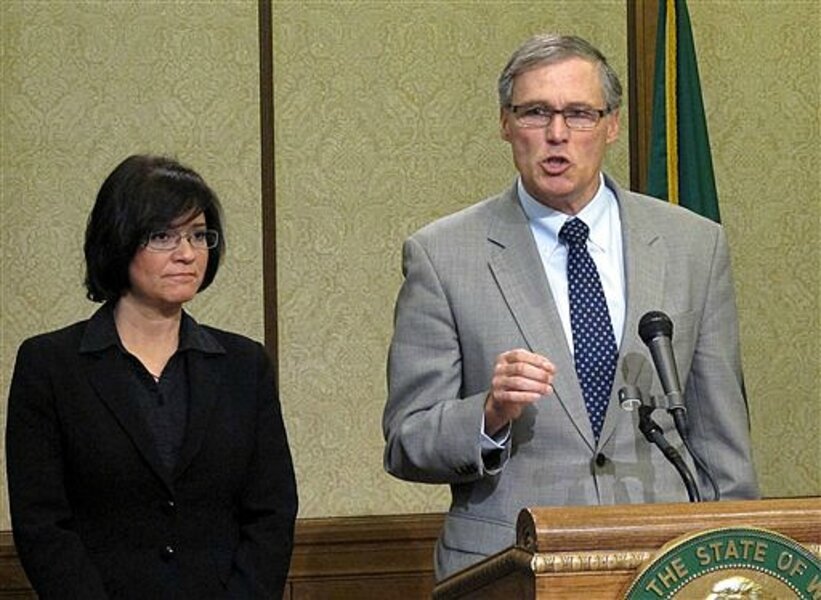Hanford nuclear tank in Washington State is leaking liquids
Loading...
| OLYMPIA, Wash.
The long-delayed cleanup of the nation's most contaminated nuclear site became the subject of more bad news Friday, when Washington Gov. Jay Inslee announced that a radioactive waste tank there is leaking.
The news raises concerns about the integrity of similar tanks at south-central Washington's Hanford nuclear reservation and puts added pressure on the federal government to resolve construction problems with the plant being built to alleviate environmental and safety risks from the waste.
The tanks, which are already long past their intended 20-year life span, hold millions of gallons of a highly radioactive stew left from decades of plutonium production for nuclear weapons.
Are you scientifically literate? Take our quiz
On Friday, the U.S. Department of Energy said liquid levels are decreasing in one of 177 underground tanks at the site. Monitoring wells near the tank have not detected higher radiation levels, but Gov. Inslee said the leak could be in the range of 150 gallons to 300 gallons over the course of a year and poses a potential long-term threat to groundwater and rivers.
"I am alarmed about this on many levels," Inslee said at a news conference. "This raises concerns, not only about the existing leak ... but also concerning the integrity of the other single shell tanks of this age."
Inslee said the state was assured years ago that such problems had been dealt with and he warned that spending cuts — particularly due to a budget fight in Congress — would create further risks at Hanford. Inslee said the cleanup must be a priority for the federal government.
"We are willing to exercise our rights using the legal system at the appropriate time. That should be clear," Inslee said.
Inslee said the state has a good partner in Energy Secretary Steven Chu but that he's concerned about whether Congress is committed to clean up the highly contaminated site.
The tank in question contains about 447,000 gallons of sludge, a mixture of solids and liquids with a mud-like consistency. The tank, built in the 1940s, is known to have leaked in the past, but was stabilized in 1995 when all liquids that could be pumped out of it were removed.
Inslee said the tank is the first to have been documented to be losing liquids since all Hanford tanks were stabilized in 2005. His staff said the federal government is working to assess other tanks.
At the height of World War II, the federal government created Hanford in the remote sagebrush of eastern Washington as part of a hush-hush project to build the atomic bomb. The site ultimately produced plutonium for the world's first atomic blast and for one of two atomic bombs dropped on Japan, effectively ending the war.
Plutonium production continued there through the Cold War. Today, Hanford is the nation's most contaminated nuclear site. Cleanup will cost billions of dollars and last decades.
Central to that cleanup is the removal of millions of gallons of a highly toxic, radioactive stew — enough to fill dozens of Olympic-size swimming pools — from 177 aging, underground tanks. Many of those tanks have leaked over time — an estimated 1 million gallons of waste — threatening the groundwater and the neighboring Columbia River, the largest waterway in the Pacific Northwest.
Twenty- eight of those tanks have double walls, allowing the Energy Department to pump waste from leaking single-shell tanks into them. However, there is very little space left in those double-shell tanks today.
In addition, construction of a $12.3 billion plant to convert the waste to a safe, stable form is years behind schedule and billions of dollars over budget. Technical problems have slowed the project, and several workers have filed lawsuits in recent months, claiming they were retaliated against for raising concerns about the plant's design and safety.
"We're out of time, obviously. These tanks are starting to fail now," said Tom Carpenter of the Hanford watchdog group Hanford Challenge. "We've got a problem. This is big."
Inslee said he would be traveling to Washington D.C. next week to discuss the problem further.







